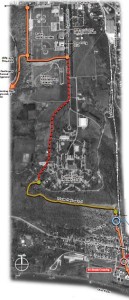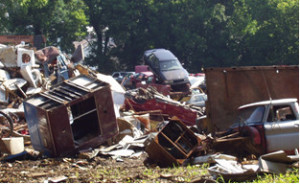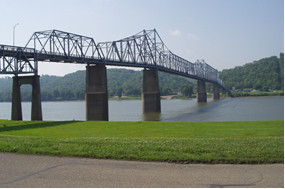Challenge
In June 2005, Mundell was retained to perform a Phase I Environmental Site Assessment (ESA) of a proposed trail area in Madison, Indiana. The site is located in a mixed residential/commercial and industrial area north and within Madison, Indiana. The total length of the proposed trail corridor was approximately 3.5 miles long. The proposed phase extensions of the trail included both a downtown/downhill section following the path of a historic railroad through town to the Ohio River and a hilltop section extending northward to a nearby State Park. The Site was mostly undeveloped.
Action
The Phase I ESA included visual observations of the site and surrounding properties, review of historical land use, review of a specially designed regulatory database search and interviews of onsite staff. Readily available resources including soil surveys, aerial photographs, and USGS topographic maps were also reviewed.
Results
 Some of the recognized environmental conditions identified in the Phase I ESA were a vacant brownfield, a coal-fired electric generating plant, the municipal waste water treatment plant, an electric substation, two adjacent, upgradient LUSTs, an auto sales & salvage scrap yard upgradient of a section of the trail.
Some of the recognized environmental conditions identified in the Phase I ESA were a vacant brownfield, a coal-fired electric generating plant, the municipal waste water treatment plant, an electric substation, two adjacent, upgradient LUSTs, an auto sales & salvage scrap yard upgradient of a section of the trail.
Scrap metal parts and tires from the scrap yard were noted lying on the rail track and a section of the proposed trail area. The auto sales & salvage scrap yard represented one of the potential environmental concerns to the trail corridor. The presence of existing debris fill across the Site may have contained residual levels of heavy metals, solvents or other waste related materials. These materials represented a potential environmental concern because of their unknown source and the possibility of associated impacts from spilled or residual container contents. Removal and proper disposal of surficial debris within the trail corridor adjacent to the scrap yard was recommended. Because the debris would have required further evaluation prior to disposal to meet local disposal requirements, characterization sampling of the underlying natural soils beneath the debris using appropriate analytical laboratory analyses was recommended for increased confidence in determining the presence or absence of environmental impacts from the debris or surface water runoff from the scrap yard.
Based on the results of this assessment, Mundell recommended a further evaluation of the identified potential environmental concerns including direct push geoprobing to test subsurface soil and groundwater in the vicinity of the potential concerns.



